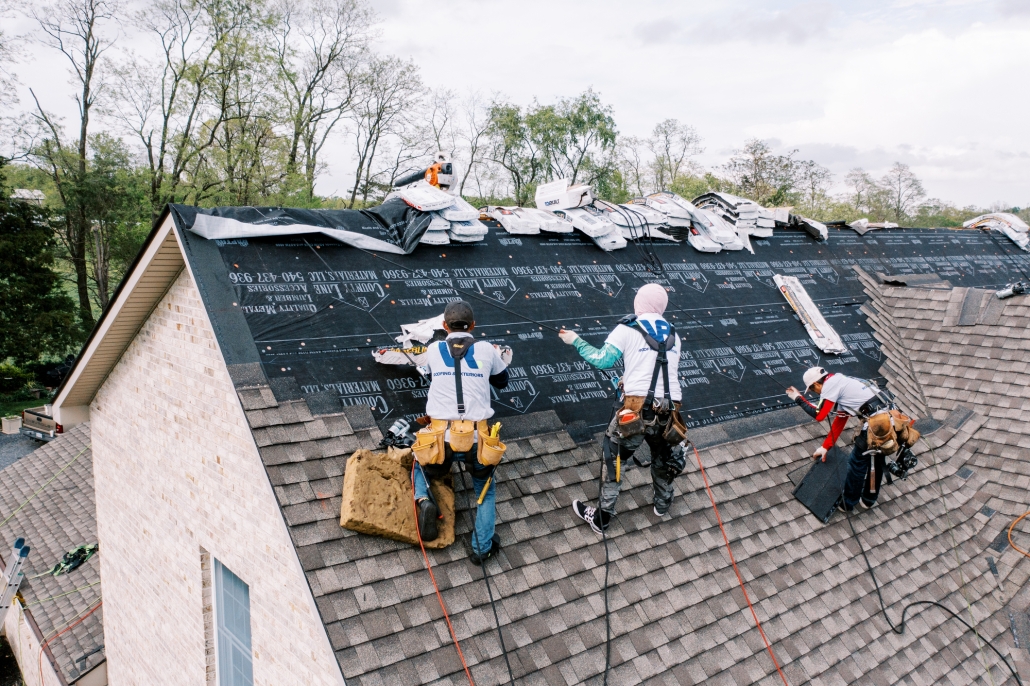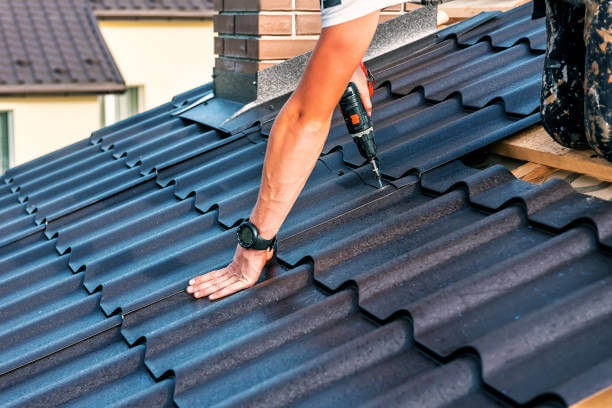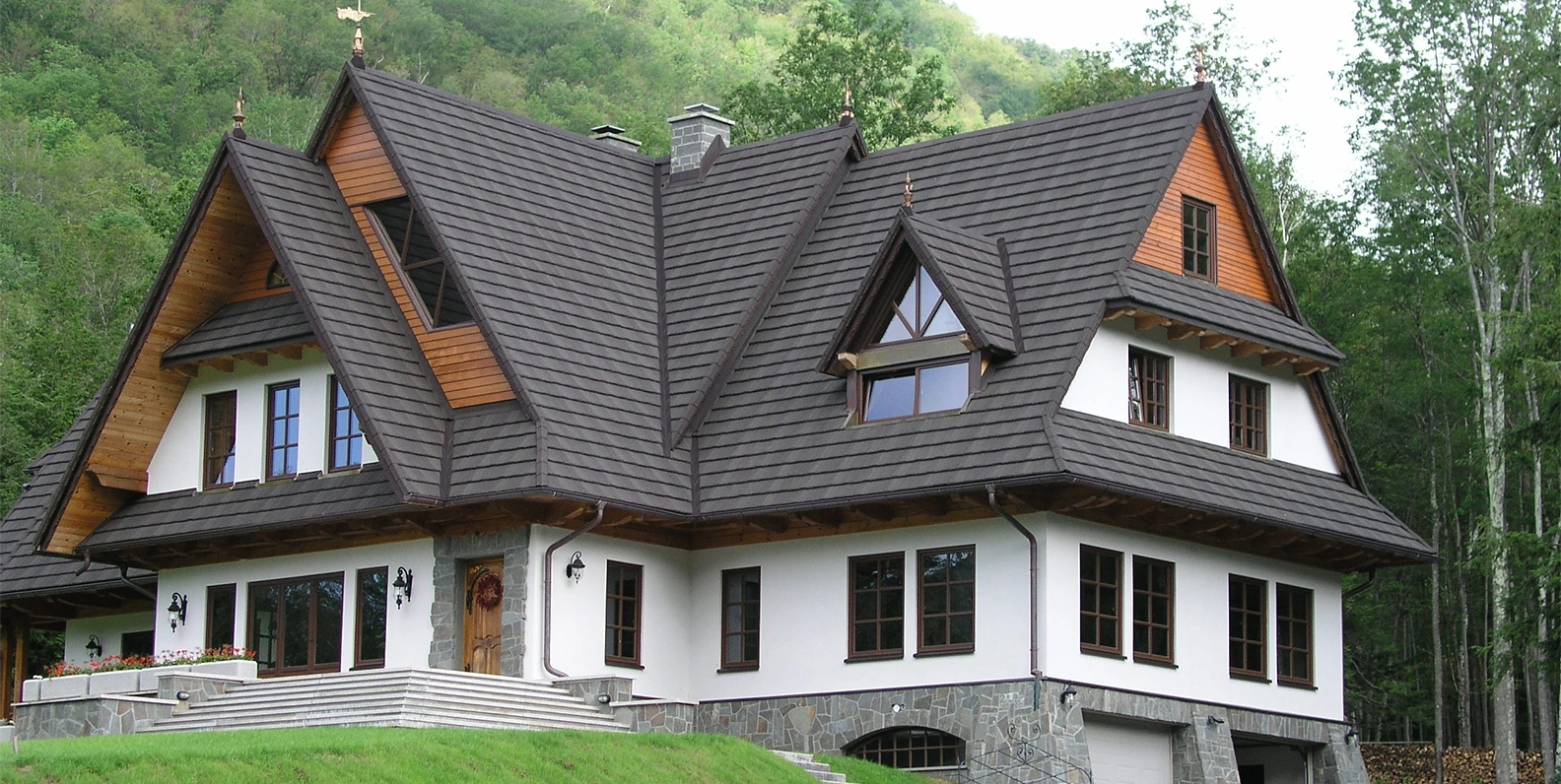Roof Repair Queens A&E: Expert Solutions for Your Home
Increase Your Home's Power Effectiveness With Professional Roof Services
Enhancing your home's energy performance with professional roof covering services includes a tactical method that surpasses plain aesthetics. The roofing system, typically a neglected element in energy conservation, plays a crucial duty in maintaining a comfortable interior setting while decreasing utility expenses. From insulation to air flow, every facet of your roofing system can influence your home's power intake. Think about the effects of roof color, the benefits of correct maintenance, and the impact of roof covering products on your energy effectiveness objectives. It's time to elevate your understanding of how expert roof solutions can transform your home right into an energy-efficient refuge.
Significance of Roofing System Insulation
Reliable roof insulation considerably adds to keeping a structure's power efficiency by minimizing heat loss and lowering power consumption. By creating an obstacle that avoids warm from leaving throughout the colder months and going into throughout the warmer months, roof insulation plays a crucial function in supporting interior temperature levels. This stabilization causes a reduced reliance on heating and cooling down systems, ultimately decreasing power expenses and lowering the overall carbon footprint of the building.
Furthermore, appropriate roofing system insulation assists in protecting against moisture buildup within the structure's framework. By creating a safety layer that prevents the development of condensation, insulation minimizes the danger of mold and mildew development, wood rot, and other forms of structural damages brought on by excess dampness. This not only protects the honesty of the building however also boosts interior air top quality, promoting a much healthier atmosphere for passengers.
In essence, buying high-quality roofing system insulation is an affordable technique that not only enhances power efficiency yet also adds to the long-lasting sustainability and comfort of a structure.
Benefits of Proper Roofing System Upkeep
Proper roof upkeep, as a vital enhance to durable roofing system insulation, plays an essential duty in ensuring the long-lasting sturdiness and efficiency of a building's roof. Routine upkeep activities such as evaluations, repairs, and cleansing aid in identifying and addressing issues prior to they escalate into expensive troubles. By proactively keeping the roof, residential property owners can expand its life-span, preventing early damage brought on by leaks, water damage, or structural issues.
One of the essential benefits of proper roof covering maintenance is boosted energy effectiveness. A properly maintained roof covering with intact seals and insulation ensures that heating and air conditioning systems operate much more effectively, lowering energy intake and utility costs. Furthermore, by keeping the roofing in great problem, residential or commercial property owners can prevent the need for major repairs or early roofing replacements, conserving both money and time over time.

Effect of Roof Shade on Energy Performance
The shade of a roof covering can considerably influence its energy efficiency performance. Light-colored roofings, such as white or light grey, show even more sunshine and warm away from the building, decreasing the amount of warmth soaked up into the framework. A&E roofing contractor queens ny. This reflective building helps in maintaining lower indoor temperature levels, specifically during warm summer months, which can result in decreased dependence on air conditioning systems and reduced energy costs. On the other hand, dark-colored roofings, like black or dark brown, absorb even more heat, resulting in higher roof roof seal interior temperatures and possibly increasing the requirement for cooling down systems.
In regions with mainly warm environments, going with a light roof covering can add to substantial energy financial savings and improved comfort inside your home. Nevertheless, in cooler environments, a dark-colored roofing might assist in keeping more heat throughout the winter season. When picking a roofing shade for your home, take into consideration elements such as climate, energy effectiveness goals, and personal preferences to make an informed decision that aligns with your details needs.

Exactly How Roof Covering Air Flow Impacts Energy Cost Savings
Enhancing roofing system air flow plays a vital role in optimizing energy efficiency and reducing overall cooling prices for buildings. Appropriate roofing system ventilation helps control the temperature in the attic area, stopping warm buildup throughout heat. By permitting warm air to leave and fresh air to circulate, roofing system air flow can substantially minimize the stress on cooling down systems, leading to reduced energy usage and utility bills.
Insufficient roof covering air flow can lead to a selection of problems that impact energy cost savings. Additionally, inadequate ventilation can add to moisture build-up, which can lead to mold and mildew growth and compromise the architectural stability of the roof.
Enhancing Efficiency With Roof Covering Products
Selecting high-quality roofing materials is necessary for making best use of power performance in buildings. The sort of roof covering material utilized can substantially affect the total power usage of a structure. For circumstances, products with high solar reflectance and thermal emittance residential or commercial properties can help in reducing the warm absorbed by the roofing system, thus decreasing the requirement for excessive a/c during heat.
One popular option for energy-efficient roof covering is amazing roof covering materials, such as metal roofs or white membrane layer roof. These products have the capacity to reflect even more sunshine and take in less warm compared to conventional dark-colored roofings, bring about lowered power costs and improved indoor convenience. Furthermore, materials with high insulation residential or commercial properties, like spray foam roof covering or protected steel panels, can improve the structure's thermal performance, lowering heat loss in the winter and warmth gain in the summer season.

Verdict
To conclude, it is essential to prioritize proper roof insulation, upkeep, color choice, ventilation, and materials to improve your home's power performance. These variables play an important duty in minimizing energy intake and expenses, along with increasing the general comfort and sustainability of your home. By purchasing professional local roofers near me roof covering services, you can considerably look at these guys boost the energy effectiveness of your home and add to a more eco-friendly lifestyle.
Think about the effects of roof covering color, the benefits of correct maintenance, and the influence of roof materials on your energy performance goals.Efficient roofing insulation considerably contributes to keeping a structure's energy performance by decreasing warmth loss and reducing energy usage - A&E roofing queens ny.Appropriate roof maintenance, as a crucial enhance to robust roofing system insulation, plays a pivotal duty in guaranteeing the long-lasting durability and performance of a structure's roof system. Furthermore, by keeping the roof in great condition, residential property owners can avoid the need for major repairs or early roofing system substitutes, saving both time and money in the lengthy run
Enhancing roof ventilation plays a critical duty in enhancing power efficiency and minimizing general air conditioning costs for buildings.